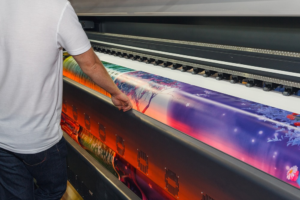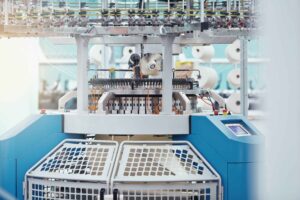What we understand of the apparel and garment industry today was not like this before. Before the beginning of the Industrial Revolution in the late 1700s, products were hand-made as per requirements and were never overproduced. The concept of tailoring was well-prevalent back then and ‘made to measure’ clothing was well in rage. Clothing was made as per style, and fit, and everything that was manufactured was one-off. Inevitably, the cost of goods was high.
However, Industrialization changed everything, and mass production emerged as a cost-effective method to manufacture clothing for all. Mass production allowed one to go for long runs of similar products made in the most efficient-most automated-manner possible. This helped bring down the price of the finished product and made clothing more affordable. But in this deal, the product lost its uniqueness and similar pieces in different sizes and colours started doing rounds. This led to an eventual circle of market demand where consumers could afford what they wanted and began to want different things. Mass production has now become the undeniable truth of the industry all across, even though a big piece of the market is moving towards slow manufacturing and consumers are demanding unique, yet ethically produced goods. It is inevitable to discuss the concept of mass manufacturing and why it is still relevant today.
Mass manufacturing to keep up with demands
The idea of mass manufacturing received a good boost when technological developments started to revive the industry and standard designs began to be manufactured at low cost. Technology allowed the industry to ‘mass customize’ goods and allowed them to adopt varied processes at an affordable price. So if mass production is about making more, mass customization helps with the production of customized goods in a large number. This brings ease to the manufacturers, who can alter designs and patterns in a cost-effective way, quickly whenever needed. This in turn allows them to make shorter and shorter runs become cost-effective to the point where each customer can be provided with exactly what he or she wants.
This theory works in favour of mass manufacturing and as compared to handmade goods, the labour-intensive aspect of these mass-produced goods is also less. This means that with less involvement of labor the finished goods being manufactured are of better quality and better design. Basically, when mass producing a design a standard size and fit structure is maintained and the design just needs to be fed into that to produce as many numbers of clothes as possible. This lowers the time taken to produce garments and makes every piece affordable too.
Making it environment-friendly
Research shows that The apparel industry emits 3.2 billion tonnes of CO2 annually, which is 10 percent of the global carbon emissions and more than 20 percent of wastewater in addition to 93 million meters of textile waste. Keeping this as the backdrop, apparently, mass production seems like a big problem for the industry that contributes to waste and environmental degradation. However, it is a two-way sword that has good and bad both included in the concept and it is our work to understand what is favourable and needs to be included and what is not working and needs to be changed or discarded. Further, logically if manufacturing is scaled down, facilities will burn cash to sustain, but their carbon footprint will be diluted. On the other hand, if manufacturing is scaled up and kept at a constant, carbon footprint may get hiked, causing a big dent in the environment. The solution here is to accept and introduce carbon light manufacturing processes, which can control the pace of fast fashion by creating sustainable fabric and made-up which can be worn more than 16 times. It has been validated through research that extending the lifespan of a garment by 8–9 months can actually reduce the Carbon emission by 20–22 percent.
But adapting a carbon-light manufacturing process requires the industry to introduce extremely agile, ultramodern machinery that can be run by a maze of AI-driven algorithms. It could be scalable but sans its legacy backdrop, it will be free of redundant technology, which will help create less residue and waste. This will in turn uplift the production and allow it to be environment-friendly irrespective of the number of garments being produced in one run. The concept of mass manufacturing cannot die off as it helps boost production, keeps the cost of garments within budget, and allows for companies to employ a big pool through their manufacturing unit. But, it is now on us to make this concept stay as a blessing by making it more environment-friendly. This will help avoid long term negative consequences too.






